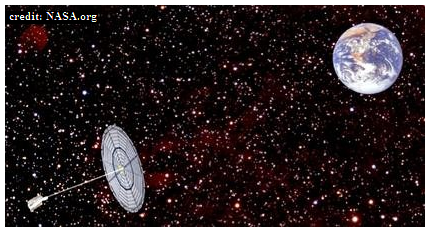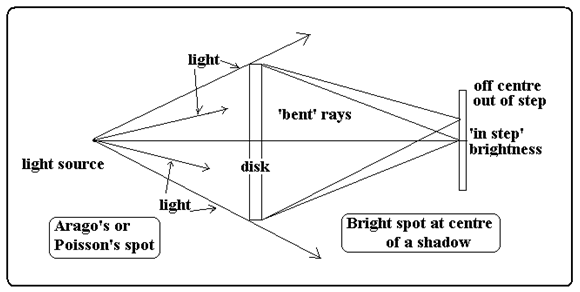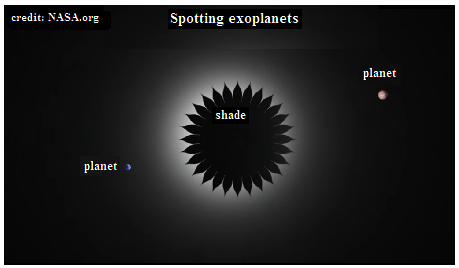The next powerful telescope to be launched into space may use opacity in place of transparency or reflection, says S.Ananthanarayanan.

It is well known that the night sky that we see is blurred by the atmosphere. Telescopes are hence located at mountaintops, or even sent up in balloons. But the best viewing is completely outside the atmosphere, in orbit around the earth. Out in space, we not only escape the distortion of visible images, but can also make use of emissions in the infrared, ultraviolet, X Rays and even Gamma Rays, which get absorbed before they reach the earth’s surface.
NASA’s great space observatories, Hubble, launched in 1990, Compton (Gamma Ray) in 1991, Chandra (X ray) in 1999 and Spitzer (infra red), in 2003, marvels of engineering in themselves, have revealed images of the cosmos that were never seen before, and which have transformed our understanding of the universe. But even these major research facilities, which were built and launched with great effort and at great cost, have their service life and would need replacement. Hubble is twenty five years old and Spitzer, the most recent, has run out of liquid helium, which it needs to be cold enough to detect infra red. The quest is hence to find substitutes, ideally with simpler technology and lower cost.
The answer, in the case of Hubble, at any rate, possibly lies in the innovative proposal, the Agaroscope, from the University of Colorado at Boulder. The Agaroscope, in place of the eight foot diameter panel of mirrors which Hubble has for focusing the light from a distant star, uses a giant starshade, which would actually block out the star! The usual arrangement, which uses lenses or mirrors, contributes large weight and hence to the cost of the launch. Furthermore, the mirror surface needs to be machined to nanometer accuracy, which presents its own difficulty as well as cost. The starshade, on the other hand, would be made of dark, opaque, plastic-like material, which could be folded at the time of launch and then unfurled, ‘like a parachute’, once it is in the desired, geostationary orbit above the earth. Setting up such an arrangement, which could even be half a mile across, would be relatively easier to build and launch. Once this shade is in place, this is the innovative wonder of the arrangement, the starlight that falls on the entire periphery of the shade gets together at the focus to create the image of the star, with far greater resolution and clarity than is possible with the Hubble telescope, says Anthony Harness, doctoral student at the University.
The Agaro spot
The principle of this effect, of an opaque object throwing an image in place of a shadow, was discovered by French scientist François Arago, who studied how the wave nature of light allowed light to bend around a disc-shaped obstacle, as if it were passing through a lens, and meet at a central point. The way it works is that while the original light wave goes past the disc in the shape of a hollow cone, to throw a circular geometric shadow, the light striking the disc also gives rise to secondary light waves from all points on the periphery of the disc. The illumination of the edge of the disc thus becomes a circular source of light. As the source of all the secondary waves is the same original light wave, the secondary waves all set out at the same stage of wave motion, and when they meet, along the axis of the disc, they have travelled the same distance and are at the same stage of wave motion, and hence they combine and add. When the periphery is very large, as in the case of a disc that is half a mile across, the energy converging at the axis can be substantial and the image quite intense.

The centre of the shadow of a disc is thus not in darkness, but is a bright spot, which is called the Arago spot or the Poisson spot. It has been worked out that the clarity of an image formed in this way would be a thousand times clearer than Hubble’s.
Using a disc to create an image was first suggested by astronomer Webster Cash, of the University of Colorado, in the course of the quest for satellites around distant stars. The main difficulty in viewing exoplanets, as such far off planet systems are called, is that their dim, reflected light cannot be made out in the glare of the light from the star itself. One way around would be to use a circular disc to cover the star, and allow a surrounding planet system to come into view. But this does not work because of the Arago effect, where the disc does not, in fact, block out the image of the star. Cash proposed that just as a circular disc created waves that came together ‘in phase’ at the centre, changing the shape of the disc could result in half the waves being ‘out of step’ with the remaining waves, and hence blank them out. Cash’s 2006 paper in the journal,Nature, thus proposed a ‘sunflower’ shaped disc, which could prevent the Arago’s spot and hence the glare of the star.

The group at the University of Colorado Centre for Astrophysics and Space Astronomy has proposed the same concept, of a large, but lightweight, opaque, circular body launched into orbit, without the sunflower periphery (as we now wish to see, not blank out the star), as a possible alternative to the aging Hubble telescope facility. NASA selected and this as one of the proposals under its ‘Innovative Advanced Concept’ (NIAC) programme in June 2014 and funded initial development. The Arago effect, barely noticeable at normal scales, becomes pronounced at the half mile diameter proposed. Webster Cash believes this could allow scientists to image space objects like black hole ‘event horizons’ and ‘plasma swaps’ or streams of charged particles between stars, says a news release from the University.
The orbiting ’starshade and telescope’ arrangement could even be turned around to point to the earth, when it would be able to make out objects the size of a rabbit, which could help find lost campers in the mountains, the news release reports Cash as saying.
------------------------------------------------------------------------------------------